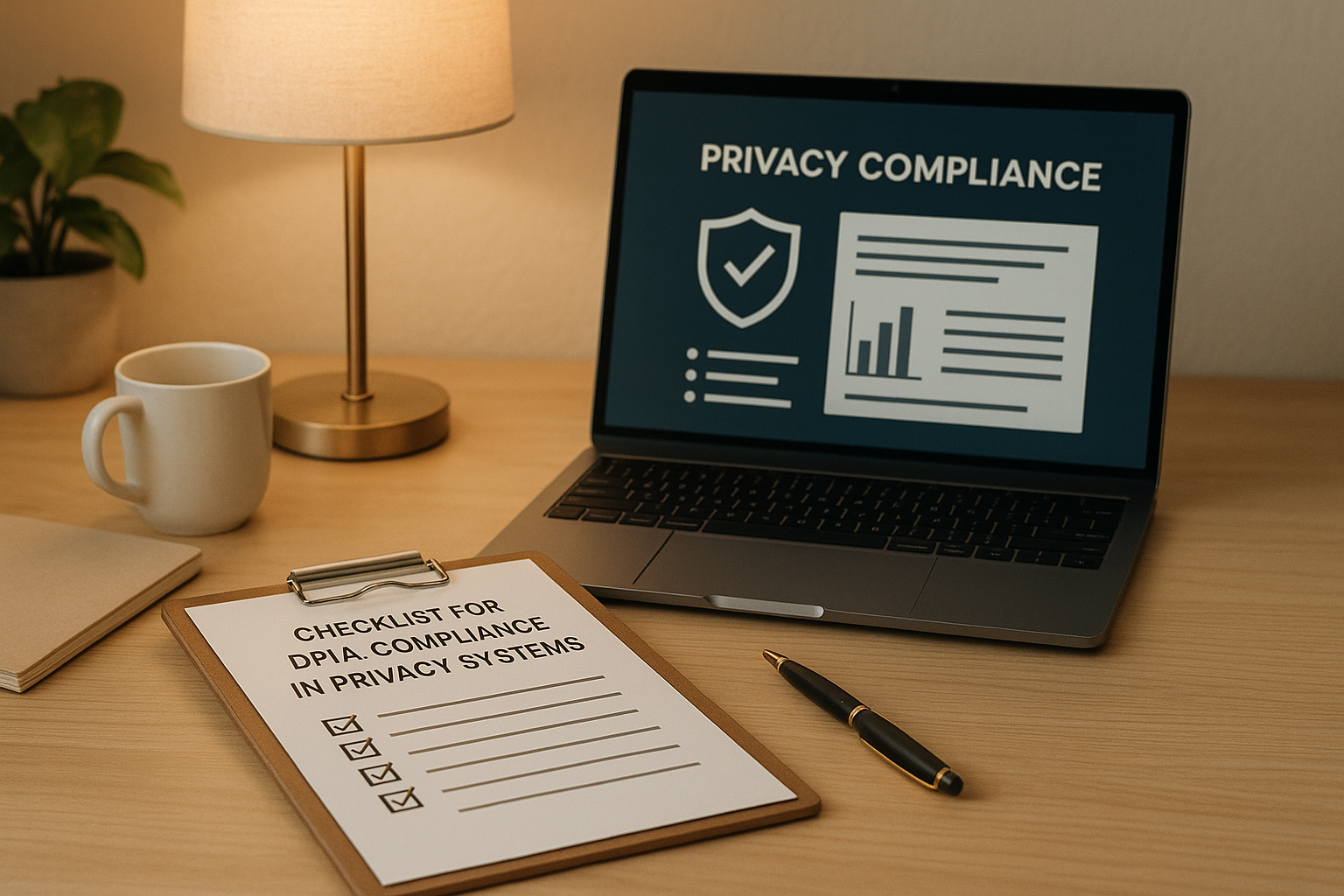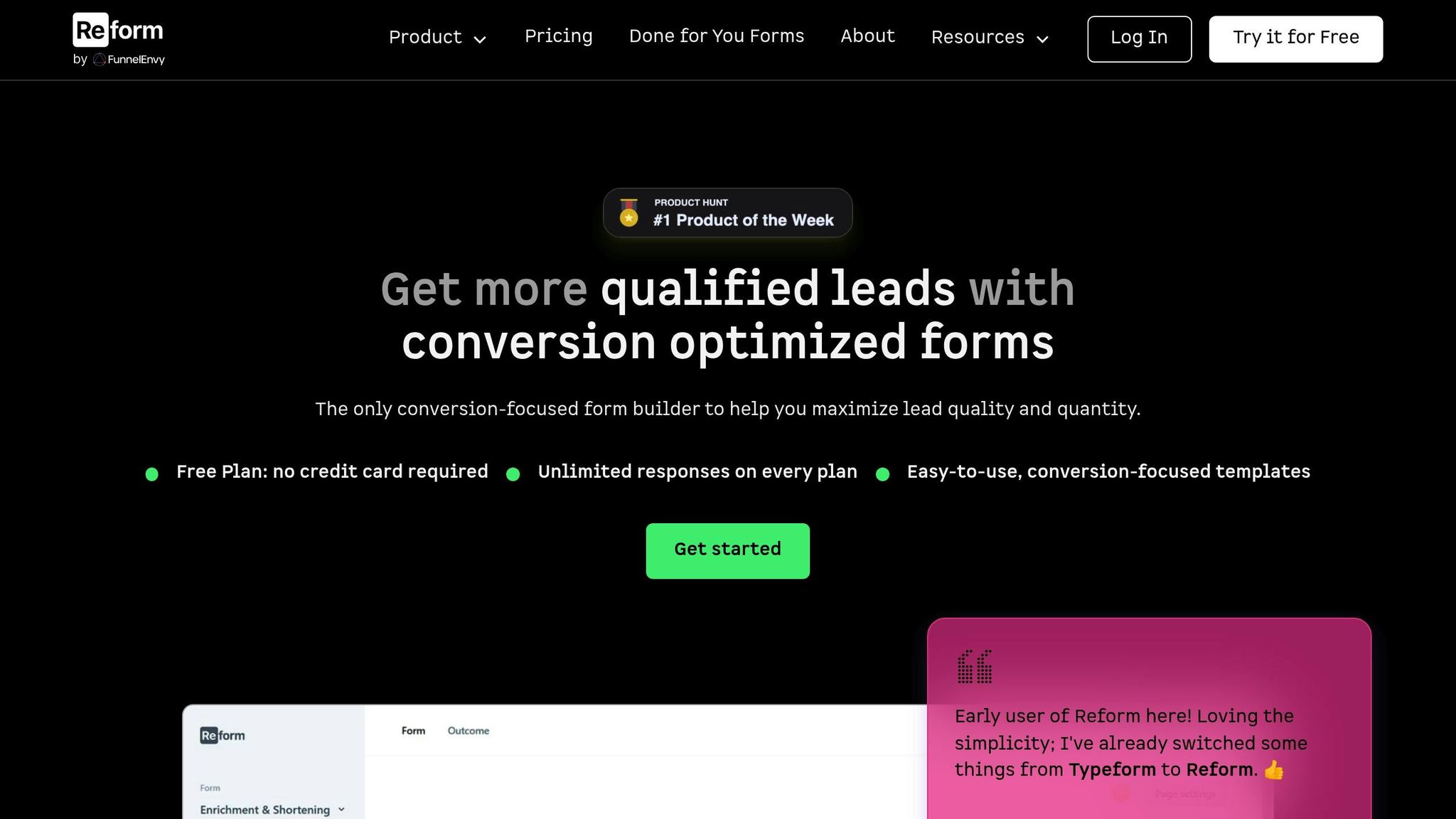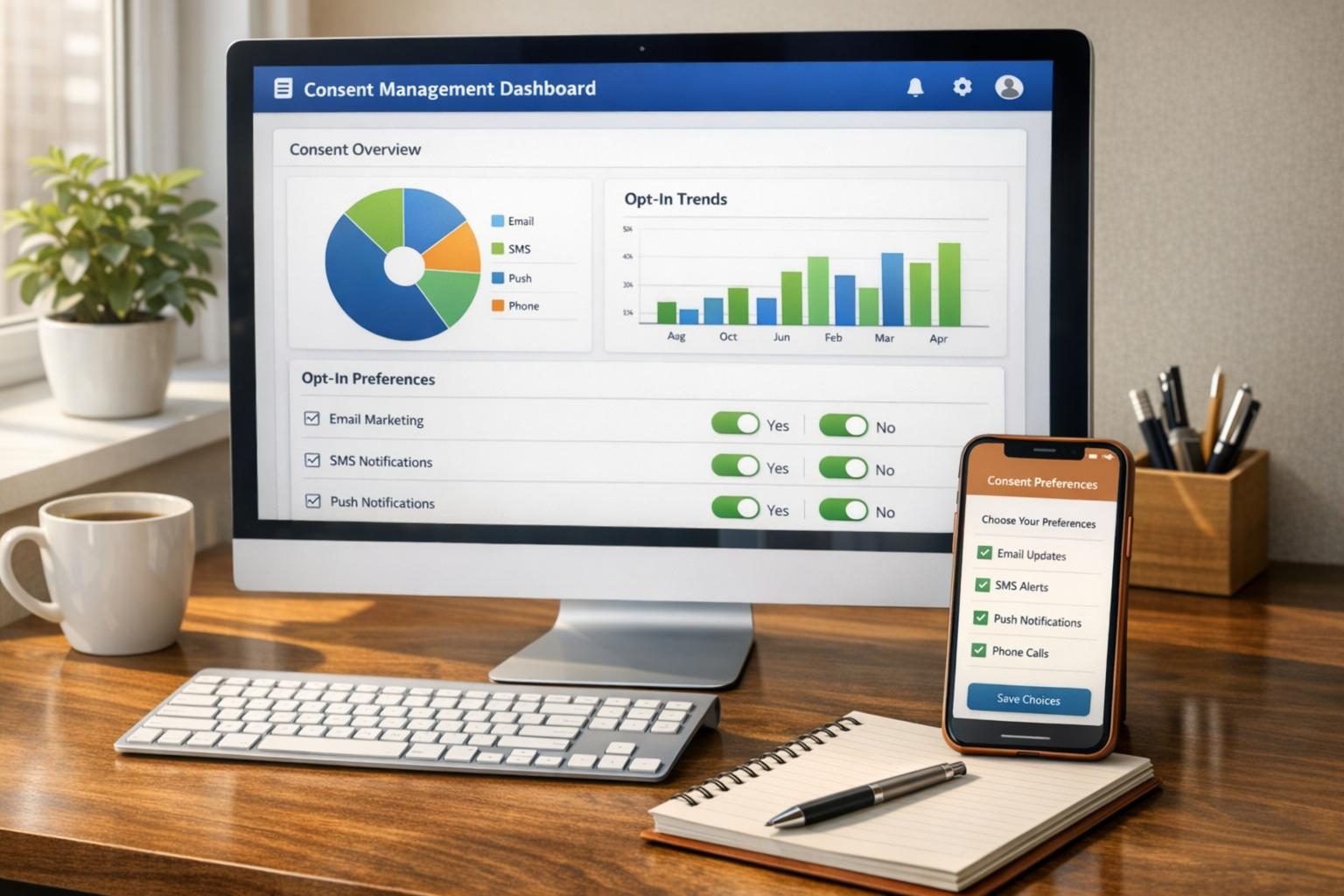Checklist for DPIA Compliance in Privacy Systems

A Data Protection Impact Assessment (DPIA) is a structured process to identify and reduce privacy risks when processing personal data, especially in high-risk scenarios like surveillance, facial recognition, or automated decision-making. It's required under the General Data Protection Regulation (GDPR) and helps organizations avoid data breaches, fines, and reputational damage.
Key Takeaways:
- When to Conduct a DPIA: High-risk processing activities, such as using new technologies or handling sensitive data.
- Legal Requirements: Article 35 of the GDPR mandates DPIAs for high-risk activities, including documenting processing details, risks, and mitigation measures.
- Non-Compliance Risks: Fines up to €20M (~$22M) or 4% of global revenue, plus reputational harm.
- Steps for Compliance:
- Document processing activities (data flow, scope, purpose).
- Identify risks (privacy, security, corporate).
- Consult stakeholders (DPO, internal teams, representatives).
- Regularly review and update DPIAs.
By integrating DPIAs into daily workflows, leveraging tools like Reform, and maintaining thorough records, you can align with GDPR and protect both your organization and the individuals whose data you process.
Required DPIA Triggers and Legal Obligations
When Must You Conduct a DPIA?
A Data Protection Impact Assessment (DPIA) is required whenever data processing activities pose a high risk to privacy. This typically applies when adopting new technologies that could significantly affect individuals' privacy. Common examples include:
- Surveillance systems
- Facial recognition tools
- Location tracking
- Large-scale processing of sensitive data
- Automated decision-making systems
- Major changes to existing data processing methods
Legal Requirements You Must Follow
Article 35 of the GDPR mandates conducting a DPIA before initiating high-risk processing. The process should include:
- A detailed description of the data processing operations
- An assessment of the necessity and proportionality of these operations
- Identification of potential risks to individuals' privacy
- Implementation of measures to reduce or eliminate those risks
It's essential to maintain comprehensive records outlining data flows, purposes, types of data, recipients, retention timelines, and security measures. These records serve as evidence of compliance with the law.
Your Data Protection Officer (DPO) must be involved in the process. For particularly high-risk activities, consulting with supervisory authorities is also required. DPIAs should be revisited whenever there are changes to operations or when new risks emerge. For ongoing high-risk activities, conducting annual reviews is a prudent practice.
For multinational organizations, the requirements become more complex. Different jurisdictions may have varying thresholds for DPIA triggers, consultation needs, and documentation standards. To ensure compliance, it’s crucial to adhere to the strictest applicable rules across all jurisdictions.
Failure to meet these obligations can result in significant penalties.
Penalties for Non-Compliance
Ignoring DPIA requirements can lead to steep financial penalties. Under the GDPR, fines can reach up to €20 million (around $22 million) or 4% of the organization’s total global annual revenue - whichever is higher. Beyond fines, authorities may impose other sanctions, such as halting specific data processing activities, requiring changes to data handling practices, or temporarily banning processing until compliance is achieved.
Enforcement efforts are designed to deter non-compliance. National authorities conduct inspections, investigate complaints, and respond to self-reported violations or media reports. The goal is to ensure that penalties are effective, proportionate, and dissuasive for each case.
Non-compliance also carries reputational risks. Public exposure of DPIA failures can erode trust with customers, business partners, and regulators, making it harder to maintain credibility in privacy-sensitive industries. Both data controllers and processors can be held accountable, with each party facing potential sanctions for lapses in compliance.
Complete DPIA Compliance Checklist
Recording Processing Activities
The first step in any compliant DPIA is to thoroughly document your processing activities. This means capturing every detail about how personal data is handled within your organization.
Start by describing the nature of your processing. Outline how personal data is collected, stored, and shared, as well as who is responsible for these activities. If you're using emerging technologies, be aware that these often attract extra scrutiny from regulators.
Next, define the processing scope. Specify the volume of data, its categories, how often it’s processed, the individuals it affects, and the geographical areas involved. This step helps regulators grasp the scale and potential impact of your activities.
The context of your processing is equally important. Explain the origins of the data and your relationship with the individuals it concerns. Reflect on how much control these individuals have over their data and whether your intended use aligns with their expectations. Highlight any sensitive considerations, such as data involving children or other vulnerable groups, along with any technological or security factors that could influence your processing.
Finally, state your purpose clearly. Be explicit about why you’re processing this data, including any legitimate interests you aim to achieve. Detail how your processing benefits individuals, your organization, and society. This purpose statement becomes a key factor when regulators assess whether your activities are necessary and proportionate.
Once your processing activities are fully documented, the next step is identifying and assessing risks.
Identifying Risks and Protection Measures
Identifying risks goes beyond obvious security threats - it’s about considering all potential harm to individuals. Start by reviewing your project design to identify data protection issues early, when they’re easier and less costly to address.
Begin with individual risks. These might include loss of control over personal information, discrimination from automated decisions, or identity theft. Financial losses, reputational harm, and even physical risks should also be documented. Don’t overlook less obvious harms, such as weakened data rights or the risk of re-identification.
Corporate risks are just as critical. Non-compliance can lead to regulatory fines, damage to your reputation, and loss of public trust. Be sure to document these alongside individual risks, as they contribute to your overall risk profile.
Use a risk register to log each identified risk. For each entry, note the source, assess the likelihood of it occurring, and evaluate its potential impact. This structured approach not only helps prioritize mitigation efforts but also demonstrates your diligence to regulators.
Pay close attention to security risks. Evaluate the chances of unauthorized access, data tampering, or complete data loss. Consider both technical vulnerabilities and human errors that could compromise your security measures. Since privacy and security often overlap, addressing one issue can frequently help with the other.
Keep monitoring your project throughout the DPIA process. Changes in scope or functionality can introduce new risks, and early detection makes them easier to manage.
Documenting risks and mitigation strategies lays the groundwork for meaningful stakeholder consultation.
Consulting Stakeholders and Keeping Records
After identifying and prioritizing risks, validate your findings through stakeholder consultation. This step isn’t just about compliance - it’s about gathering insights that can strengthen your privacy protections. Start by involving your Data Protection Officer (DPO) early on. Their expertise ensures that your assessment aligns with legal requirements and helps spot risks you might overlook.
Whenever possible, engage affected individuals. While you can’t consult every person whose data you process, representative groups or user panels can provide valuable feedback on expectations and concerns. Their input often highlights privacy issues that technical teams might miss.
Bring in internal stakeholders such as IT security teams, legal advisors, and department heads. Each group offers unique insights that contribute to a more comprehensive risk assessment.
Keep a detailed record of stakeholder consultations, including dates, participant names, decisions made, and even dissenting opinions. This creates a decision audit trail that shows how you moved from identifying risks to implementing mitigation strategies. If regulators ever question your decisions, this documentation will be essential. Be sure to include any alternative approaches you considered and explain why you chose your final course of action.
Finally, remember that consultation is an ongoing process. Plan for regular stakeholder engagement as your processing activities evolve. These periodic check-ins help you catch emerging risks early and maintain support for your privacy initiatives.
Adding DPIAs to Privacy Management Systems
Improving DPIA Workflows
To effectively integrate DPIAs (Data Protection Impact Assessments) into your privacy management processes, it's essential to adopt a privacy-by-design mindset. This means embedding DPIA requirements into every project from the outset. Start by forming a cross-functional team that includes representatives from legal, IT, and business departments. This collaborative approach ensures privacy considerations are consistently addressed across all areas of your organization. Whether it's a marketing team launching a new campaign, IT deploying a system, or the product team rolling out a new feature, DPIA requirements should be a natural part of the process.
Automation tools can also significantly simplify DPIA workflows. Many privacy management systems can automatically trigger DPIA assessments when handling sensitive data, implementing new technologies, or entering new markets. This automation not only improves efficiency but also reduces the likelihood of errors or missed steps in the process.
Another helpful strategy is implementing a data catalog to provide a clear view of data flows, which makes DPIA documentation much easier. Regular privacy training for employees can further foster a culture of awareness and accountability. Tools like Reform can streamline these workflows, helping to maintain compliance and reduce risks.
Supporting Compliance with Reform

Integrating DPIAs into your privacy management system becomes much more efficient with specialized tools like Reform.
Reform’s form-building features simplify data collection while supporting DPIA compliance. For instance, its conditional routing allows you to collect only the personal data you genuinely need, which helps minimize privacy risks from the start. When documenting processes like lead enrichment in your DPIA, include details about the data sources and the legal basis for combining them with user-provided information.
Reform also offers real-time analytics to track form completion rates, identify drop-off points, and flag problematic fields. This feedback helps you refine your data collection process to align with the principle of data minimization. Additional features like email validation and spam prevention enhance data quality while reducing potential security risks. When integrating Reform with CRM or marketing automation tools, ensure your DPIA thoroughly documents the entire data flow to maintain compliance.
Regular Review and Updates
DPIAs are not static documents - they need regular updates to stay relevant as your organization and its data practices evolve.
Ongoing reviews are essential, particularly as business operations, technology, and regulations change. Set a routine to review and update DPIAs, such as annually or whenever significant changes occur in your data processing activities. For example, as AI-driven tools become more common, your DPIAs should account for risks related to automated decision-making or predictive analytics.
Stay informed about regulatory updates in your jurisdiction, as changes in privacy laws could impact your existing DPIAs. Establishing a cross-functional privacy governance structure - where legal, IT, marketing, and product teams coordinate regularly - ensures that your DPIA updates reflect the full scope of organizational changes and keep your compliance efforts on track.
sbb-itb-5f36581
Checklist & wrap up DPIA Step by Step Guide Data Protection Impact Assessment
Key Points and Next Steps
Building on the checklist and steps outlined earlier, here’s a summary of the key actions to ensure your DPIA compliance stays on track.
DPIA Process Summary
Keep a detailed record of every decision and action taken during the DPIA process. For each risk, note whether it was eliminated, reduced, or accepted, along with the remaining risk after mitigation measures are applied. This documentation isn't just for internal use - it plays a vital role during regulatory audits by demonstrating your commitment to privacy compliance.
Incorporate input from stakeholders and your Data Protection Officer (DPO). If you choose to deviate from their advice or the views of other consultees, make sure to document why. Transparency in this process is critical to building trust and ensuring accountability.
"It is essential to view DPIAs as ongoing processes rather than one-off exercises. They should be regularly reviewed and updated to reflect any changes in the project or its environment, ensuring continuous management of risks." - GDPR Local
Another crucial step is determining whether regulatory consultation is necessary. If, after implementing all possible mitigation measures, a high residual risk remains, you are required to consult with the relevant data protection authority before moving forward.
Final Compliance Checklist
To meet DPIA compliance requirements, focus on completing the following:
- Compile a DPIA report: This report should include a clear summary of identified risks, mitigation strategies, and the rationale behind your decisions. It should be accessible and auditable, serving as evidence of your compliance efforts.
- Integrate DPIA findings into your project workflow: Assign specific responsibilities and action points to ensure follow-through. Treat these outcomes as part of your regular project management processes rather than standalone tasks.
- Monitor and update regularly: Keep your DPIA records up to date, especially when there are significant changes to the scope, nature, or purpose of data processing. These changes may require a new DPIA to address emerging risks.
- Foster transparency: Share your DPIA or a summary of its findings with stakeholders. While sensitive information can be redacted, publishing this information demonstrates accountability and builds trust.
These steps lay the groundwork for the compliance actions discussed below.
Taking Action on Compliance
The real value of a DPIA lies in the actions you take based on its findings. Start by implementing the identified measures immediately - don’t let the assessment remain a theoretical exercise. Assign team members to address specific risks and set clear deadlines for completing these tasks.
Plan regular DPIA reviews to align with major events like product launches, system upgrades, or regulatory updates. This proactive approach can prevent compliance gaps and help you address potential privacy issues before they escalate.
Take advantage of tools like Reform to streamline your DPIA processes. Document how features like conditional routing and data minimization align with your privacy objectives. Be sure to account for any integrations with CRM or marketing automation systems in your risk assessments.
Finally, maintain detailed DPIA records to demonstrate accountability during regulatory reviews. Regulators are increasingly focused on how organizations manage risks and protect personal data. Your documentation should clearly outline the steps you’ve taken to identify risks, make decisions, and implement protective measures.
FAQs
What steps should my organization take to ensure a DPIA complies with GDPR requirements?
How to Ensure Your DPIA Complies with GDPR
When conducting a Data Protection Impact Assessment (DPIA) under GDPR, the first step is to pinpoint data processing activities that might carry high risks to individuals' rights and freedoms. Carefully evaluate these risks, and make sure to involve key stakeholders throughout the process. This collaborative approach helps ensure a more thorough analysis and promotes accountability.
Document the purpose behind the data processing in clear terms. Break down the operations involved and assess any potential impacts on individuals. If you uncover risks, take action by implementing measures to reduce or eliminate them. It's critical to keep detailed records of your assessment and the steps you take to address risks. These records serve as evidence of your compliance with GDPR.
By prioritizing transparency and adopting a proactive approach to managing risks, you can safeguard personal data while maintaining strong privacy standards.
How can tools like Reform simplify and improve the DPIA process?
Automation tools such as Reform simplify the process of conducting Data Protection Impact Assessments (DPIAs), making them quicker and more precise. By automating crucial steps like data collection, risk evaluation, and documentation, these tools reduce the need for manual effort and help standardize workflows, cutting down on errors and saving valuable time.
Reform stands out with features like conditional routing and real-time analytics, which ensure assessments are both comprehensive and aligned with privacy regulations. This enables businesses to pinpoint risks efficiently, maintain accurate records, and bolster their overall data protection strategies.
What are the risks for a business if it doesn’t complete a DPIA as required by GDPR?
Failing to carry out a Data Protection Impact Assessment (DPIA), as mandated by GDPR, can lead to hefty consequences. Businesses could face fines as high as $22 million or 4% of their annual global revenue - whichever amount is greater.
But the fallout doesn’t stop there. Skipping a DPIA can invite regulatory scrutiny, enforcement actions, and significant reputational harm. It also heightens the chances of data breaches and non-compliance, which could damage customer trust and spark additional legal challenges. Staying on top of DPIA requirements is essential to protecting your business and the sensitive data it handles.
Related posts
Get new content delivered straight to your inbox

The Response
Updates on the Reform platform, insights on optimizing conversion rates, and tips to craft forms that convert.
Drive real results with form optimizations
Tested across hundreds of experiments, our strategies deliver a 215% lift in qualified leads for B2B and SaaS companies.


.webp)



